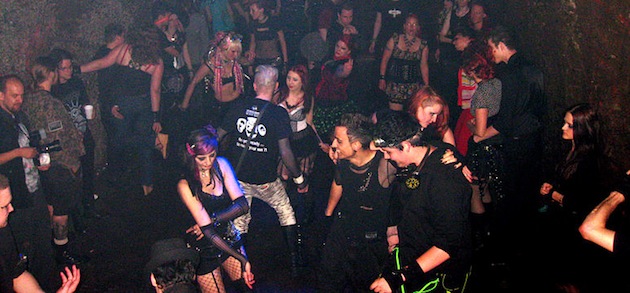By studying the behavioral sciences, professional investigators can hone their reasoning, logic, and healthy skepticism.
I started studying criminology because of my fascination with a specific personality type: the psychopath. Characterized by shallow emotions and lack of regard, the psychopath is capable of cold, calculating manipulations and dangerously impulsive behaviors.
The more I researched psychopaths, the more I wanted to know about all sorts of people. Eventually, I began to focus on the parallels between forensic investigations and social science research, and the many ways social science could enrich the investigator.
Veracity
To start, both the investigator and the social scientist are motivated to look past “conventional wisdom” and learn the truth of the matter.
According to William Gorton (n.d.), the purpose of social science “is to lay bare facts about an often murky social world.” Gorton further elaborates:
“Without social science, our factual understanding of the social world would be left mainly to folk wisdom and anecdotal evidence, neither of which is very reliable. Uncovering facts about the social world is no mean feat. It often requires empirical rigor and conceptual sophistication.”
The investigator, like the social scientist, is trying to make sense of that murkiness. Both employ logic, methods, and theory to resolve the questions of their inquiry.
Social science, like all science, is dedicated to arriving at metaphysical truths. When a scientist makes a claim, it is scrutinized and debated by other scientists who, as a group, tend to be a skeptical bunch, eager to point out faulty procedure or weak logic. It is this mechanism that protects science from “folk wisdom.”
Folk wisdom is knowledge that’s widely acknowledged as accurate but isn’t deduced by rigorous logic or methodology — for example, the widely-quoted “fact” that 90% of communication is nonverbal. Such a claim might be useful as a hypothesis, but it falls short of being science, because there’s no empirical study that comes close to quantifying or proving it (Knapp & Hall, 2002).
The purpose of science is to rise above folk wisdom in order to provide provable fact.
[quote align=”center” color=”#999999″]Like the social scientist, the investigator should strive to rise above folk wisdom in order to establish truth.[/quote]
Because courts are concerned with matters of fact, they are not averse to hearing how science interprets the evidence. Federal courts widely reference the Daubert Standard in determining the admissibility of expert testimony. The Daubert Standard requires that scientific principals be falsifiable (capable of being disproven by current tests), have been subject to peer review, have a known or probable error rate, are based on acceptable scientific procedures, and have a certain degree of acceptance within the academic community.
While the investigator need not be an expert witness, her investigations would surely benefit from scientific knowledge and inquiry. Like the social scientist, the investigator should strive to rise above folk wisdom in order to establish objective truth.

Methodology
Social scientists rely on many sources of data — interviews, surveys, texts, artifacts, observation, and experiments — to arrive at claims. For each of these data sources, social scientists have devised many methods to obtain and analyze information. Many of these methods are applied in varying degrees of sophistication by investigators. For instance, an investigator might apply statement analysis to assess the veracity of claims made in a letter.
It is, however, troublesome when investigators apply such methods faithfully and blindly. The social scientist would ask: What makes statement analysis valid? Replace the italicized phrase with any investigative technique and ask: What studies support the theory on which the technique it is based? What logical and conceptual challenges potentially make the technique unreliable? Who challenges the method’s validity and why? If no one challenges the technique, is it in its infancy?
The social scientist who chooses to use statement analysis will likely proceed with some methodological creativity that addresses problems. Scientists seek to improve their methods by means of skepticism, critical thinking, and ingenuity — and so should investigators.
[quote align=”center” color=”#999999″]Scientists seek to improve their methods by means of skepticism, critical thinking, and ingenuity — and so should investigators.[/quote]
One way that investigators could become more innovative is to study social science methods that are applicable to their area of specialty. Investigators who use statement analysis would benefit from learning more about content analysis, discourse analysis, and sociolinguistic theory. Investigators who do a lot of interviewing would benefit from learning about interviewing in sociolinguistic, sociological, anthropological, and psychological research. Investigators who work undercover might enhance their observations by methods developed by ethnographers.
Theory
All investigative methods are based on theory. To borrow from a self-evident example: Physical covert surveillance is based on the theory that people are more likely to let their guard down when they believe they’re not being observed. The number of fraudulent workers’ compensation claimants who’ve been busted through covert surveillance appears to validate the theory.
Theory affects how inquiry methodologies are conducted, but not all theories are equal. Some theories gather enough evidence to become scientific laws. Others have plenty of supporting evidence, but enough questions remain to prevent them from becoming laws. Some theories are pragmatic and commonsensical, while others remain hypotheses in their infancy that may ultimately give way to better explanations. Thus, gravitational theory, over time, graduated to physical law — of far greater weight than the rickety theory that physiological stress indicates deception during an investigative interview.
The purpose of theory is to propose a possible truth; the purpose of method is to arrive at truth. But to be successful, a method must begin with a well-established truth in order to arrive at further truths. When methods are based on bad theoretical foundations, they often produce erroneous results.
Consider the Reid method of interviewing, which purposely creates psychological discomfort (cognitive dissonance) and then uses suggestive language and apparent sympathy to elicit a confession. Suggestive interviewing is now believed to be correlated to false confessions, while cognitive dissonance is also linked to poor decision making (Cialdini, 2001; Kassin, 2004; Zimbardo, 2007).
An investigator who has thoroughly studied interviewing techniques in the broader contexts of behavioral science will have a superior arsenal at her disposal than the investigator who only knows the Reid method.
[quote align=”center” color=”#999999″] An investigator who has thoroughly studied interviewing techniques in the broader contexts of behavioral science will have a superior arsenal at her disposal than the investigator who only knows the Reid method.[/quote]
But the investigator who is an experienced, knowledgable interviewer shouldn’t just settle on broadening her theory of interviewing. She should also be interested in better understanding human behavior by reviewing current theory and research.
Consider, for instance, identity theory, which posits that behavior is dictated by social roles, and that for every role there is an opposite relational role created through interaction (Stets, 2006). If this theory is correct, it follows that the very fact of being an interviewer creates the role of an interviewee. Those roles may also signify other roles such as investigator and suspect.
Another aspect of the theory is that the role dictates behavior. Therefore, the investigator could take advantage of the theory by actively defining her role in a way she believes is conducive to obtaining information.
In essence, social science proposes various truths about human nature that can be strategically used to assist an investigation or make sense of an observation.

Logic
Whether evidence properly dictates a conclusion is a matter of logic. Philosophy has spun a whole sub-discipline that is dedicated to judging science on its logical merits, and scientists strive to follow the philosopher’s logic (e.g., Popper, 1998). While science is the pursuit of truth, logic is the measure of its soundness. For this reason, investigators should also be concerned with the logic of their methods and claims.
Deductive logic is the strongest and most stringent form of argumentation, as the conclusion must be right given the premises on which the argument is based.
Consider the following example:
Premise: No two people have the exact fingerprints.
Premise: Jack’s fingerprints are on the vase.
Premise: Jack would have to have touched the vase for his fingerprints to be on it.
Conclusion: Jack touched the vase.
Sometimes this kind of logic transfers smoothly to the actual world. For example:
Nobody is allowed on the property between 6PM and 6AM.
Jack was photographed on the property at 10PM.
Therefore, Jack was trespassing.
In the example, it’s clear that “nobody” doesn’t exclude Jack. Furthermore, Jack was on the property at a time when nobody was allowed, therefore Jack was clearly trespassing. However, more often than not, deductive logic is elusive when transferred to the real world. For instance, how do we know that no two people have the same fingerprints (as per the first example)?
The first example of a deductive argument actually hinges on premises that derive from inductive and abductive logic.
Inductive logic bases its conclusion on premises that support its probability but don’t absolutely entail it. For example:
Premise: The exact fingerprint pattern has never been observed on two different people.
Conclusion: People (likely) have individualistically unique fingerprints.
The problem with induction is that no number of observations can guarantee that there aren’t unobserved exceptions. Thus, the proposition that all people possess a distinct fingerprint is fallible and inconclusive as long as undocumented fingerprints exist in the world.
Faced with the problem of induction, scientists turn to abductive logic, which is also known as inference to the best explanation. Abduction is choosing from known multiple hypotheses (explanations) the one that best fits the evidence or premises. To refer back to our first example, the fact that Jack had access to the vase — if we assume this to be true — makes it even more unlikely that the fingerprints belong to another person whose prints just happen to match Jack’s (the alternative explanation).
Another explanation is that the fingerprint technician misanalysed the prints, but these could be analyzed independently. Multiple fingerprint technicians could independently arrive at the same conclusion and still be wrong, but the most fitting explanation is that they are right.
To rephrase: Abduction is the consideration of all likely known explanations, with the choice being given to the one that best fits the evidence.
The investigator likely uses some degree of abduction when she considers whether a kiss indicates infidelity or a golf swing indicates that a back injury is bogus. Just as abduction requires a confluence of evidence for an explanation to be fitting, a mere kiss may not be enough to settle the claim of infidelity. What kind of kiss? What other behavior occurred before and after the kiss? Where did the kiss take place (outside a hotel)? The more information, the more fitting a particular explanation should become.
It’s worth noting: The CIA formalized abductive logic as an intelligence analysis method called Analysis of Competing Hypothesis. The “deductions” of Sherlock Holmes were not really deductions but abductions (Carson, 2009). And abduction is also the logic of Gregory House, whose team of diagnostic physicians proposes various conditions that fit a patient’s symptoms with House treating for the most fitting explanation and then amending depending on the patient’s reaction to the treatment.

The Human Side of Things
As humans, we want to be right about our beliefs, which is why we sometimes hold onto faulty theories with incredible tenacity. This fact is proven by many wrongful convictions, in which overzealous prosecutors painted a convincing argument out of arduous belief despite contrary evidence or faulty logic (Kassin, 2004).
[quote align=”center” color=”#999999″] As investigators, our purpose should not be to be right but to seek truth.[/quote]
As a philosophy professor once told me, “Anything can be given a good argument.” As investigators, our purpose should not be to be right but to seek truth. The search for truth means being able to entertain multiple explanations and adapting as new evidence presents. It means being both flexible and rigorous.
At best, the investigator is an applied social scientist. She aims to bring truth out of murky situations. To that purpose, she will apply observation and inquiry with theory and logic. The more accurate her understanding of human nature, the more successful she will be.
Unfortunately, there are too many factoids given as psychological fact, and police training manuals have not been exempt from this practice (Vrij, 2004). The solution to this is to understand logic, to understand the scientific method, to read science and to think critically of it.
References
Carson, David. (2009). Abduction of Sherlock Holmes. International Journal of Police Science and Management, 11(2), 193 to 202.
Cialdini, Robert B. (2001). Influence: Science and practice. Boston: Allyn and Bacon.
Daubert v. Merrell Dow Pharmaceuticals, 509 579 (U.S. Supreme Court 1993).
Gorton, William A. (n.d.). The philosophy of social science. In J. Fieser & B. Dowden (Eds.), Internet encyclopedia of philosophy. Retrieved from http://www.iep.utm.edu/soc-sci/ – H4.
Kassin, Saul. (2004). True or false: I’d know a false confession if I seen one. In P. A. Granhad & L. A. Stromwell (Eds.), The detection of deception in forensic contexts. Cambridge: Cambridge University Press.
Knapp, Mark L., & Hall, Judith A. (2002). Nonverbal communication in human interaction (5th ed.). Boston: Wadesworth.
Popper, Karl. (1998). Science: Conjectures and refutations. In E. D. Klemke, R. Hollinger & D. W. Rudge (Eds.), Introductory readings in the philosophy of science. Amherst: Prometheus Books.
Stets, Jan E. (2006). Identity theory. In P. J. Burke (Ed.), Contemporary social psychological theories. Stanford: Stanford University Press.
Vrij, Aldert. (2004). Guidelines to catch a liar In P. A. Granhag & L. A. Stromwall (Eds.), The detection of deception in forensic contexts. Cambridge and London: Cambridge University Press.
Zimbardo, Philip. (2007). The lucifer effect: Understanding how good people turn evil. New York, NY: Random House.
About the author:
 Kevin Goodman is a freelance researcher and writer. He has a master’s degree from Skidmore College with a focus in cognition, culture, and communication. He also has a graduate certificate in criminology from the University of Massachusetts, Lowell.
Kevin Goodman is a freelance researcher and writer. He has a master’s degree from Skidmore College with a focus in cognition, culture, and communication. He also has a graduate certificate in criminology from the University of Massachusetts, Lowell.
His primary academic interest is the psychology of belief and its interrelationship with deception. Kevin enjoys making wine, being outdoors and exploring whatever he finds curious. He lives near Bloomington, Indiana, with his wife and two daughters.

